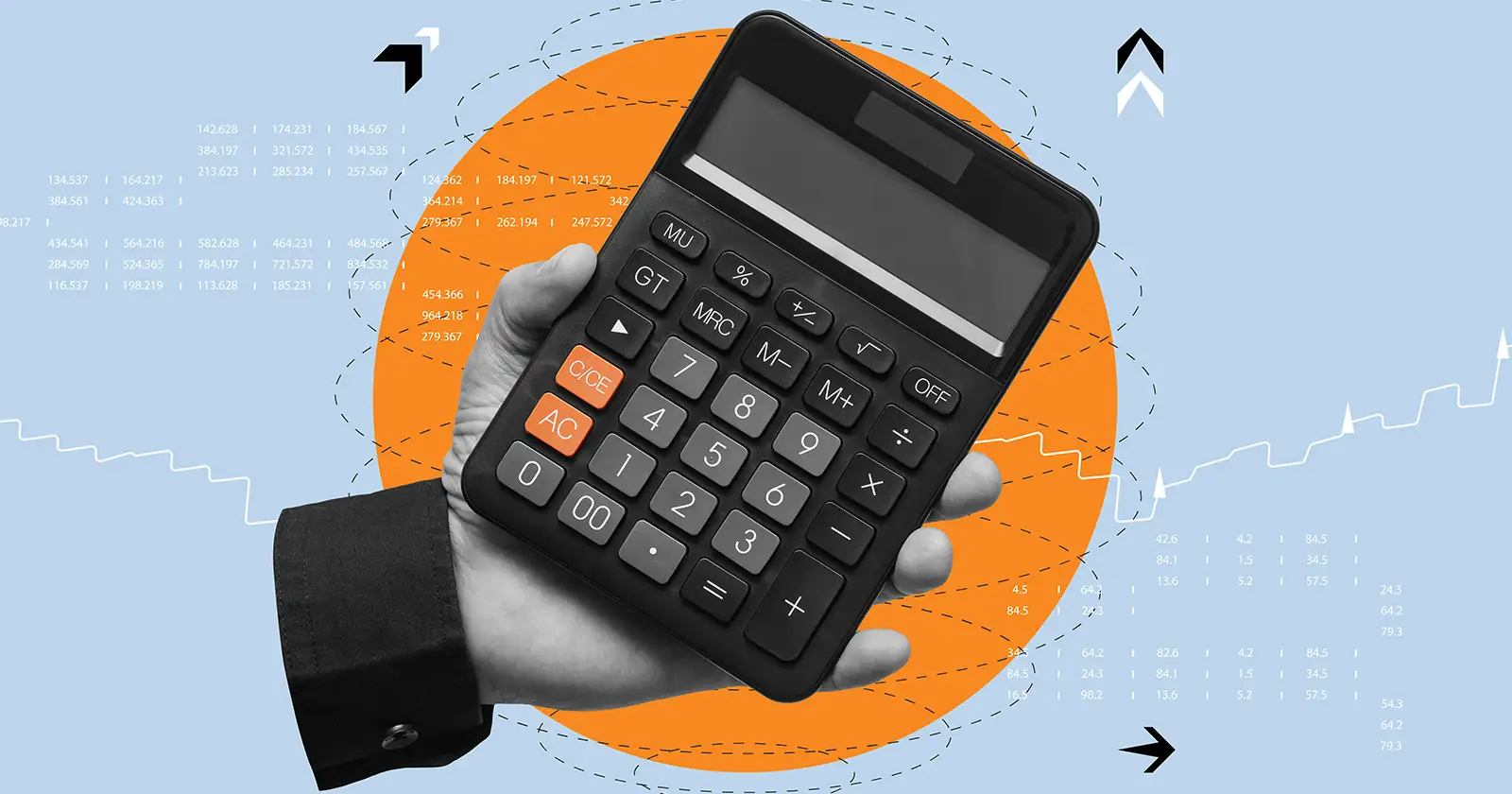Money isn’t everything — especially when it comes to attracting and retaining top talent. Sure, offering competitive salaries can make your business a more competitive employer, but compensation is just one of many factors that makes your company a great place to work. Benefits, organizational culture, office location, and other non-monetary offerings play a significant role in making your company attractive to prospective employees and fostering loyalty and dedication among your current staff.
Together, these factors make up a “total rewards package” that conveys your business’s value to both current and prospective employees. In this article, we’ll explain what an employee total rewards strategy is, why it’s beneficial to approach employee compensation holistically, and how you can create a total rewards program for your business.
{{rich-takeaway}}
What Is a Total Rewards Strategy?
To define employee total rewards, it’s essential to start by defining total compensation. Total compensation consists of all the monetary rewards an employee earns during a year. In addition to an employee’s salary, total compensation includes other financial benefits like bonuses, commissions, merit awards, and equity. Together, these make up an employee’s gross pay. While total compensation only includes monetary rewards, total rewards factor in non-monetary benefits as well.
Employee total rewards combine both the monetary and non-monetary incentives an employee earns at a company. So in addition to an individual’s base salary or base pay, a total rewards package includes things like:
- Traditional benefits: healthcare, vision, and dental insurance
- Voluntary benefits: disability insurance, employee assistance programs, financial counseling, or critical illness coverage
- Pay-for-performance variable pay: spot bonuses, commission, and profit sharing
- Stock-based compensation: RSUs, stock options, or employee stock purchase plans
- Retirement plans: 401(k), 403(b), SIMPLE IRA plans, or SEP IRAs
- Paid time off (PTO): vacation time, parental leave, sick leave, and volunteer time off
- Work-life balance: flexible work scheduling, hybrid/remote working, and sabbaticals
- Career development opportunities: training programs, internal growth opportunities, and professional growth stipends
- Wellness programs: on-site fitness facilities, gym membership reimbursement, or catered lunches
“Companies go to great lengths and considerable expense to position themselves as ‘great places to work’; however, they typically get little credit from their employees for all of these supposed good works,” said J.D. Pincus, PhD, chief innovation officer at human capital solutions company Leading Indicator Systems.
“Part of the reason is that these types of rewards are never communicated to employees,” Pincus continued. “By sharing the complete reward landscape and how the company provides opportunities for security, inclusion, autonomy, and caring; immersion, personal growth, recognition, and material success; and a reputation for fairness, ethical practices, and higher purpose, it becomes easy to understand the vast non-monetary rewards that employees receive.”
What Is a Total Rewards Statement?
Usually, HR professionals calculate each employee’s individual total rewards and present it to them on a total rewards statement, either during annual performance reviews for employees or along with an offer letter for candidates. These statements help give employees a better understanding of all the internal programs and initiatives their organization has to help them personally and professionally. Listing and quantifying all of these benefits makes it much easier for employees to recognize the value they get by working for your company.
Benefits of Calculating Employee Total Rewards
In addition to letting you think more holistically and strategically about your business’s compensation and benefits plans, calculating your employee total rewards can help your human resources team motivate and retain your workforce and attract new talent. Here’s how.
1. Attract top talent.
Sharing employee total rewards can be a powerful recruiting tool. It gives prospective job candidates a more inclusive view of all the benefits that come with working for your company, allowing them to make a more informed decision about your employment offer.
In fact, remote job posting site FlexJobs found through its 2022 Career Pulse Survey that 63% of respondents would choose a job with better work-life balance over better pay. Plus, video conferencing device company Owl Labs found in its 2022 State of Remote Work Report that 52% of workers would take a pay cut of 5% or more to have the flexibility to work from wherever they want. Clearly, money is only one of many factors job candidates consider when looking for a new role. Being upfront about these perks in job descriptions and employment offers can help you win over top talent and seal the deal with candidates who are on the fence.
2. Retain current employees.
Adopting an employee total rewards program can also help you retain top talent by educating your employees on your current offerings, thus allowing them to take full advantage of everything your business has to offer. Along with their salaries, things like benefits programs and workplace flexibility matter to employees.
Pew Research Center data found that of the Americans who quit their jobs in 2021:
- 63% said low pay was a reason they did so.
- 45% cited lack of flexibility in choosing when they completed their hours.
- 43% said poor benefits were part of the cause.
Clearly, total compensation matters to your current employees. And educating your employees on all of your benefits and programs can inspire company loyalty, increase tenure, and improve retention.
3. Engage your workforce.
Lastly, sharing a personalized total rewards statement with each of your employees allows them to better understand everything they’re getting out of their working relationship with your organization. A total rewards mindset can help your team build an inclusive benefits package that offers something for every employee and boosts employee engagement.
Tying benefits like annual bonuses to performance can increase employee accountability and encourage employees to meet and exceed individual and company goals. When your employees feel recognized and know how their contributions affect overall company success, they will be more engaged in their work.
{{rich-highlight-1}}
Employee Total Rewards Best Practices
Ready to introduce total rewards at your company? Here are a few things to keep in mind when crafting a total rewards strategy and annual statements.
1. Invest in benefits your employees care about.
Looking at your compensation and benefits plan holistically lets you be more strategic about your plans for the future and identify gaps in your current offerings. Remember that you’re designing these rewards for your employees, so you should regularly survey them to ensure your current programs meet their present needs.
“Find out from your employees what matters to them and build total rewards programs that provide solutions to their needs,” advised Aaron Cleavinger, managing partner at Murdoch Mason Executive Search Group, an executive search and strategy consulting firm specializing in consumer-focused companies. “Then, communicate the connection between employee input and company offerings early and often, so they feel connected to the process.”
Not sure how to ask your employees what they think of your benefits package? Here are a few examples of benefits questions you can include in your next survey:
- Are you satisfied with our current PTO plan?
- On a scale of 1 to 5, how well do you understand the internal growth opportunities available to you within our company?
- How well do you feel our company’s healthcare plan meets your current needs?
- Do you understand all of the benefits our company offers?
- Are there any benefits you think we should change or add, and why?
- On a scale of 1 to 5, how satisfied are you with our parental leave policy?
- To what degree can you see yourself growing and developing your career in this company?
2. Offer competitive total compensation.
To be a competitive employer, you need to offer a competitive total compensation package. In order to determine the strength of your company’s offerings, it’s best to consult benchmark data and compare your package to that of similar companies.
Lattice’s Compensation Benchmarks, powered by Mercer, make it easy to compare your employee compensation packages to an international dataset with figures from more than 90 countries and over 150 cities. You can even filter the data by a specific role, geographic location, and industry to ensure that your salaries remain fair and up to date with the current market trends.
Looking to get started with compensation benchmark data? Take a look at our workbook Compensation Benchmarking 101 for tips on how to pay your employees fairly while still being budget-conscious in uncertain times.
3. Don’t inflate value.
When assembling your personalized total rewards statements for employees, make sure you don’t inflate the monetary value of any non-monetary benefits. For example, while unlimited PTO is an attractive perk, it doesn’t warrant a $50,000 price tag. You can estimate the actual value by calculating the equivalent of their daily pay and multiplying that by the number of days the employee took off in the past calendar year. For a prospective job candidate, you can take a similar approach by multiplying their proposed daily pay by the number of PTO days included in your policy or offer; or, if you offer an unlimited PTO plan, use the average number of vacation days your employees took off in the previous year.
“Be transparent about the actual costs and benefits of the programs,” stressed Cleavinger. “Employees see through attempts to overemphasize value if they don’t feel positively impacted.” You can even ask your employees how valuable a certain program or policy is to them to help you generate a value for a hard-to-quantify offering.
4. Communicate total rewards to employees.
Once you’ve calculated every employee’s total rewards package, you need to share it with them. Some companies have software providers that allow them to share statements with employees digitally, while other businesses choose to distribute physical statements to their teams. However your business decides to share statements, be sure you tell employees where they can find their personalized report and remind them to take the time to review it.
Most companies choose to share employee total rewards annually, often tying them to performance or salary reviews or the end of the fiscal year, but the timeline is completely up to you. You can make it a practice for managers to print out hard copies of these statements to bring to all their team members’ annual performance reviews, or consider sending an updated digital copy to employees every year during open enrollment.
5. Categorize your statements.
Breaking your rewards up into distinct categories can make your statements easier to read and help you identify program gaps. Many companies choose to split their rewards up into five categories: compensation, benefits, work-life, performance and recognition, and employee development. That said, you can use whichever categories work best for you, your business, and your employees.
—
Keep in mind that every benefit your business offers is designed to help your employees and show that your company takes care of them beyond a paycheck. While some employee benefits might impact certain individuals more than others, it’s your job to design a total rewards package that leaves all your employees feeling supported and valued by your organization.
A total rewards statement can be a powerful visual reminder of the financial commitment your business has made to employees’ personal and professional growth. Plus, it’s a great first step toward embracing pay transparency.
{{rich-highlight-2}}
Key Takeaways:
- Total rewards combine monetary and non-monetary employee incentives.
- Listing and quantifying rewards makes it easier to demonstrate your value as an employer.
- HR teams may present this information via total rewards statements.
- Providing employees with total rewards visibility is a component of pay transparency.






.webp)



